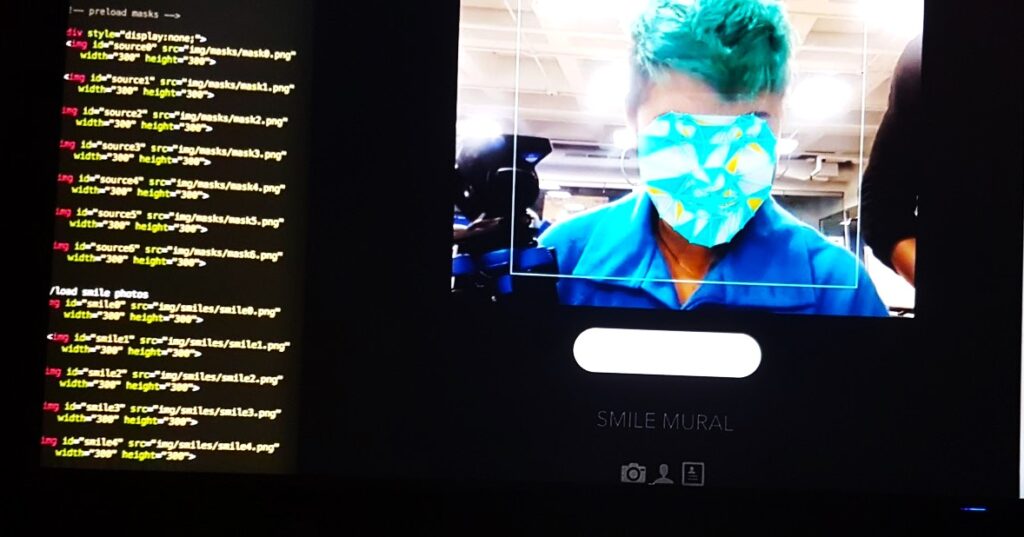How does digital video consumption contribute to the global carbon footprint?

Advances in digital recognition software. Image by Tim Sandle, from Barbican, London.
As video traffic flowing over public Internet and corporate information technology (IT) networks continue to grow, the technology community is gradually coming to grips with the environmental implications of this resource-intensive category of traffic.
Philippe Wetzel, CEO and founder of VITEC, a global technology leader in the IPTV space, explains to Digital Journal how video contributes to the global carbon footprint and how we can include ecosystem design and strategies to reduce the environmental impact in a business-savvy and rational manner.
The impact of digital video on sustainability and carbon emissions
The Internet contributes more than 3.7 percent of global greenhouse gas emissions, explains Wetzel. Within this, video represents over 80 percent of the traffic that flows through this global network which is growing rapidly at about 25 percent per year.
A similar dynamic is taking place over enterprise networks, this why tracking the impact of digital video consumption across the business ecosystem is becoming increasingly important.
With all these devices, there is an increase in video and encoders to handle the rising demand for video content, driven by the growth of video-heavy social applications like TikTok and WhatsApp. These factors drive high demand for encoders and decoders.
As to the specific impact, Wetzel explains: “Encoders, for instance, consume significantly more energy than decoders – sometimes as much as 5 to 10 times as much energy, in comparison. In the past, there was an asynchronous relationship between these two categories of technology. Most video content was created — and encoded — by a much smaller percentage of the population compared to those who consumed – and therefore decoded video. Today, the gap between these two groups has narrowed significantly.”
This translates to a significant impact on the carbon footprint, observes Wetzel: “User-generated video content for professional and personal purposes has skyrocketed. As a result, we not only have more traffic flowing through public and private networks, but we also have much more original content generation taking place. This is significantly elevating the carbon footprint of the video sector. As a result, industry executives are re-evaluating how to balance sustainability with the ever-growing corporate and consumer demand for video content. This is why we — together as a video streaming community — must take responsible steps to initiate an effort to reduce the carbon footprint on the entire value chain of this industry.”
An industry-wide effort is required to reduce energy consumption
Setting out the case for action, Wetzel finds: 2Carbon footprint assessment must encompass all direct and indirect emissions within the value chain. This should include everything from the extraction of raw materials, design, manufacturing, transportation, and even the final recycling of the devices.”
What this means is: “All key players will need to actively participate in reducing energy consumption across their stage of the ecosystem. Optimizing the energy consumption of each key player — and their products — can positively impact the planet. It can also be a good business practice, if done correctly, because it reduces costs for the key players in the long run. This makes it a win-win for everyone involved. In today’s market — across a growing number of geographic regions — environmentally optimized products and services are also more competitive. They reduce the raw material needed for production and consume less electricity upon deployment.”
VITEC shares its commitment to sustainability
As to what his own company has done, Wetzel states: “VITEC has taken a leadership position in introducing a well-developed methodology, named GreenPEG, to move forward in a sustainable, measurable, and accountable manner. This involves the implementation of a comprehensive strategy made up of five specific Initiatives.”
Wetzel summarises these as:
- Modern Facilities. In 2021, VITEC invested in photovoltaic panels and batteries to generate electricity for its manufacturing needs in three separate facilities: 1 in Germany and 2 in the US (California and Georgia). In 2022, they built a facility in France that is up to the latest standards in energy efficiency. In 2023, the company has been working on upgrading their facilities in Scotland to include high-performance heat pumps.
- Streamlining Logistics. In 2022, VITEC moved its U.S. logistics center from the West Coast to the East Coast to consolidate and reduce the surface area of their supply chain. This means fewer trucks have to travel fewer miles to meet logistical needs. By the end of 2023, they plan to achieve a similar outcome in Europe by moving to a single logistics center.
- Embracing energy-efficient design principles. VITEC has integrated eco-friendly requirements into their design control process and architecture. This has had a major impact on hardware and software designs.
Going forwards, across the industry, Wetzel makes a call for more action: “More, however, needs to be done. It is not enough for a single company to engage in sustainability initiatives. An industry-wide effort is required. That is why VITEC is enlisting their key stakeholders, partner organizations, and even competitors to join them in creating sustainability initiatives across the entire ecosystem. The next step is to help guide the next video compression standard to ensure it is more eco-friendly and fast-enabled. To do so, VITEC assembling a consortium of industrial and academic partners. They want to extend an open invitation to any other organization willing to join them.”
How does digital video consumption contribute to the global carbon footprint?
#digital #video #consumption #contribute #global #carbon #footprint





